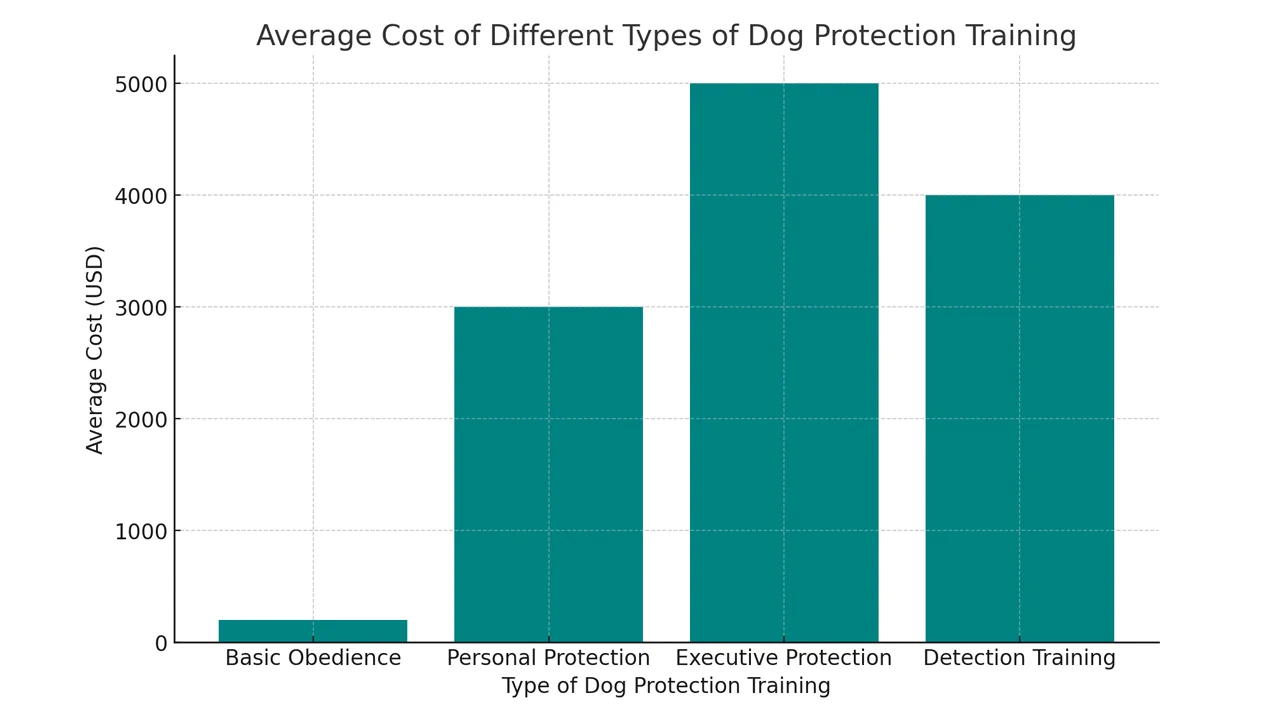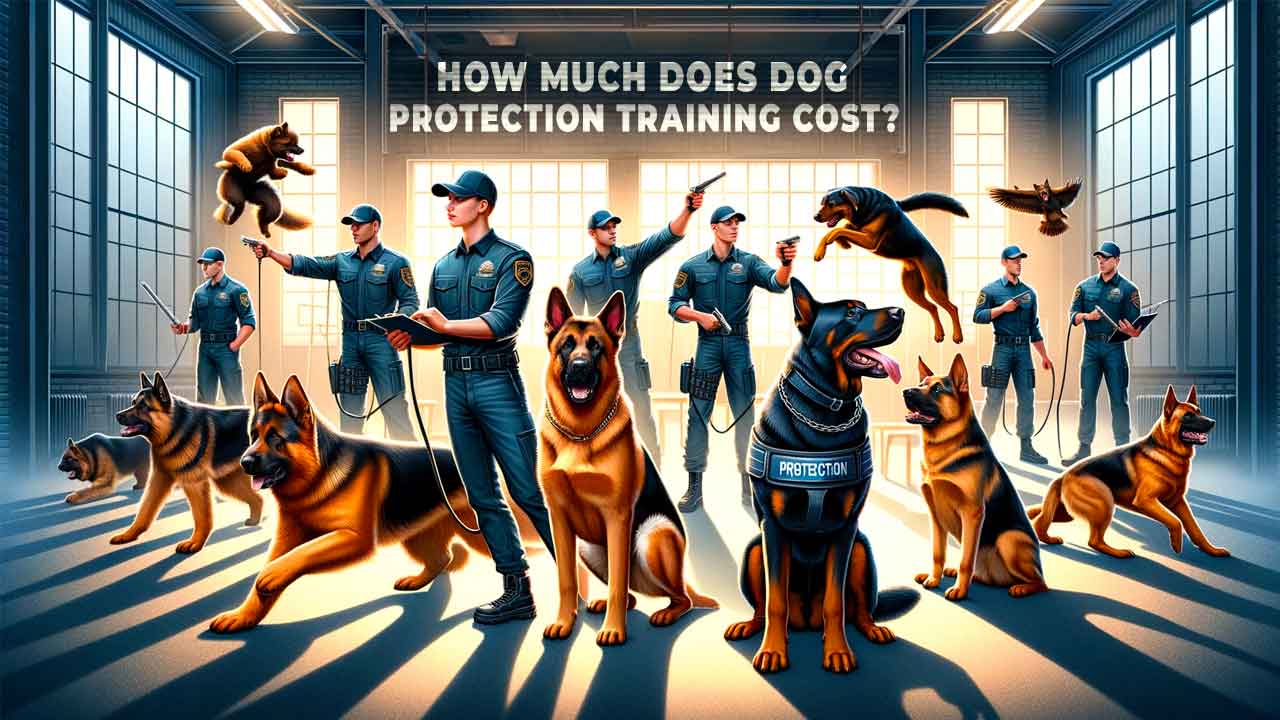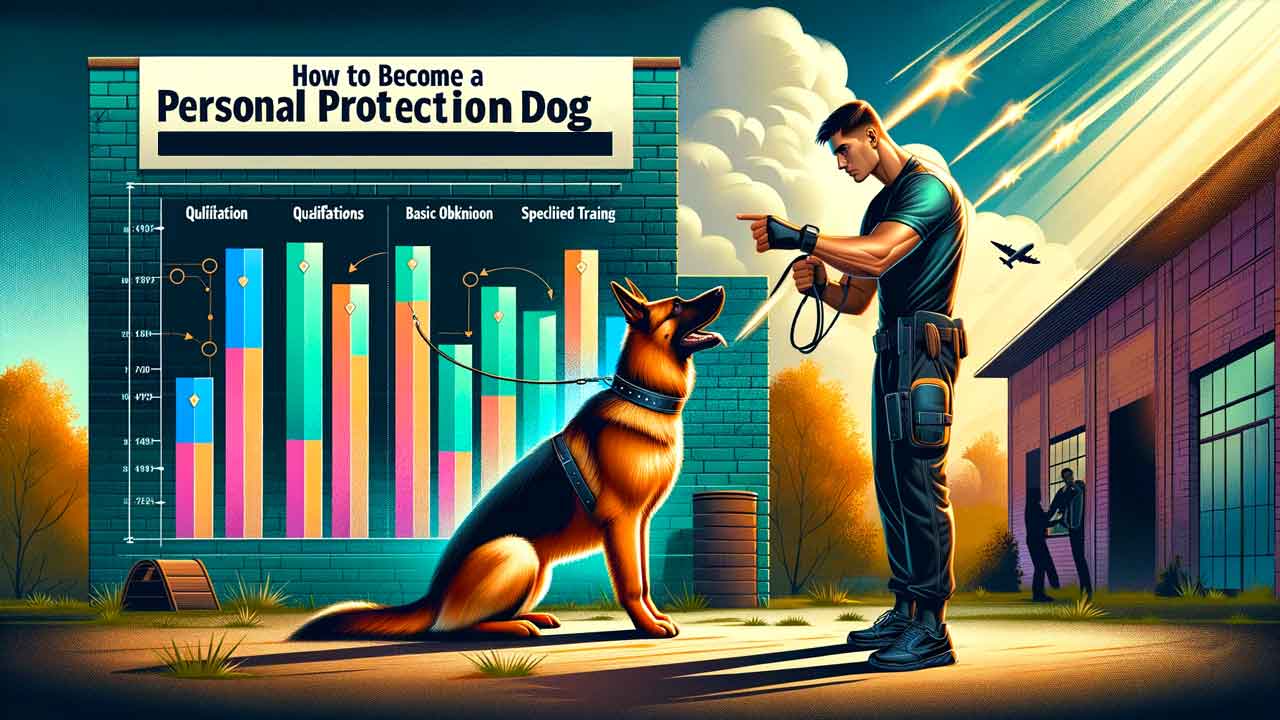How Much Does Dog Protection Training Cost: Complete Cost Guide
Key Takeaways:
| Key Takeaways | Details |
|---|---|
| Understanding Dog Protection Training | Covers disciplines like basic obedience, personal protection, executive protection, and detection. |
| Benefits | Enhances a dog's protective instincts while maintaining controlled behavior. |
| Ideal Candidates | Beneficial for individuals needing personal safety or property protection. |
| Cost Factors | Determined by training type, trainer's expertise, and program length. |
| Average Costs | Ranges based on training specificity, with specialized training being more costly. |
| Selecting a Trainer | Prioritize qualifications, experience, and effective training methods. |
| Training Tips | Focus on patience, consistency, positive reinforcement, and early socialization. |
| Conclusion | Highlights the importance of professional dog protection training and suggests consulting experts. |
How Much Does Dog Protection Training Cost?
Dog protection training costs can vary significantly, primarily depending on the training's complexity and the trainer's expertise. Basic obedience training, essential for any protection dog, typically ranges from $50 to $200 per session. More specialized protection training, tailored for personal or property security, can be substantially higher, often ranging from $1,000 to $5,000 or more. This price variation is due to the advanced skills required and the training duration. Factors like the dog's breed, age, and specific training requirements also play a role in determining the cost. While this training can be a significant investment, it is crucial for those seeking a disciplined, well-trained dog capable of providing protection. High-quality training ensures that the dog not only learns the necessary protective skills but also remains obedient and controlled, a crucial aspect of effective protection training.
Average Cost of Different Types of Dog Protection Training

The bar chart above provides a visual representation of the hypothetical average costs associated with different types of dog protection training, including basic obedience, personal protection, executive protection, and detection training. Each bar represents a different training type, with the corresponding average cost in USD. This chart helps to visually convey the varying costs of different dog protection training programs, offering a clear perspective for those considering investing in specialized training for their dogs.
Introduction
Dog protection training is a specialized area of canine training that focuses on enhancing a dog's natural protective instincts in a controlled and disciplined way. This article will delve into the various aspects of dog protection training, including its benefits, different types available, and, importantly, the costs involved. Additionally, it will offer guidance on choosing the right trainer and provide tips for successful training.
What is Dog Protection Training?
Dog protection training involves teaching dogs to protect their owners and property. This training isn't just about fostering aggression; it's about instilling control, obedience, and the ability to discern and react appropriately to potential threats. The training enhances the dog's natural instincts while ensuring they remain disciplined and responsive to their handler's commands. It's a delicate balance between harnessing the dog's protective nature and preventing unwarranted aggressive behavior.
Benefits of Dog Protection Training
The benefits of dog protection training are multifaceted. It not only strengthens the dog's ability to protect but also enhances its overall obedience and responsiveness. Dogs that undergo this training become more disciplined, which makes them reliable companions in various situations. The training also builds a stronger bond between the dog and the owner, as mutual trust and understanding form the foundation of the training process.
Who Needs Dog Protection Training?
Dog protection training is not limited to security personnel or law enforcement agencies. It's increasingly sought after by private individuals who are looking for an added layer of personal security or want to protect their property. This training is particularly beneficial for people living in high-risk areas or those who might be susceptible to security threats. It's also a valuable asset for individuals who want a well-trained, disciplined pet that can offer both companionship and protection.
Types of Dog Protection Training
There are various types of dog protection training, each tailored to specific needs and goals:
- Basic Obedience Training: The foundation of all dog training, focusing on basic commands and behavior control.
- Personal Protection Dog Training: Tailored to individuals, teaching dogs to protect their owners from threats.
- Executive Protection Dog Training: Advanced training for dogs that protect high-profile individuals, often involving more complex scenarios.
- Detection Dog Training: Specializes in training dogs to detect specific substances, such as narcotics or explosives.
Each type of training addresses different aspects of a dog's protective abilities and behavioral control. The complexity and intensity of the training vary depending on the desired outcome.
Learn more about the costs and details of K9 dog training in our article: How Much is K9 Dog Training?
Cost of Dog Protection Training
Factors that Affect the Cost
The cost of dog protection training can be influenced by several factors:
- Type of Training: More advanced and specialized training, such as executive protection or detection, typically costs more than basic obedience training.
- Trainer’s Expertise: Trainers with extensive experience and qualifications in dog protection training generally charge higher rates.
- Duration of Training: Longer training programs, which offer more comprehensive training, also tend to be more expensive.
Understanding these factors is crucial when budgeting for dog protection training. It helps in making informed decisions and choosing a training program that aligns with your specific needs and financial constraints.
To compare this with other types of dog training, read about: How Much Does it Cost to Train a Hunting Dog?
Average Cost of Dog Protection Training
The average cost of dog protection training varies widely depending on the type and intensity of the training required. Basic obedience training sessions might cost between $50 to $200 per session. In contrast, specialized training programs like personal or executive protection training can range from $1,000 to over $5,000, depending on the program's duration and complexity. These figures can provide a baseline for what to expect when considering dog protection training for your pet.
Tips for Saving Money on Dog Protection Training
To save money on dog protection training, consider the following tips:
- Group Training Sessions: Opting for group training sessions rather than private ones can significantly reduce costs.
- Shorter Programs: While comprehensive training is ideal, shorter programs or workshops can offer a condensed version of essential training at a lower cost.
- Research and Compare: Take the time to research and compare prices and services offered by different trainers. This can help you find quality training at a competitive price.
How to Choose a Dog Protection Trainer
Qualifications to Look For
When selecting a dog protection trainer, it's essential to consider their qualifications and areas of expertise. Look for trainers who have specific certifications in dog protection training. These certifications indicate that the trainer has undergone specialized training and adheres to certain standards in dog training methodologies.
Experience
The trainer's experience in dog protection training is a critical factor to consider. Experienced trainers bring a wealth of knowledge and skills to the training process. They are often better equipped to handle different breeds, temperaments, and training challenges. An experienced trainer can also provide customized training that addresses the specific needs of your dog.
Training Methods
The training methods used by the trainer should align with positive and humane practices. Training methods based on positive reinforcement are not only more effective but also promote a healthy and trusting relationship between the dog and the trainer. Avoid trainers who use harsh or punitive methods, as these can be detrimental to the dog's well-being and can lead to behavioral issues.
Cost
While cost is an important consideration, it shouldn't be the sole factor in choosing a trainer. Quality training may come at a higher price, but it often results in better outcomes. When evaluating cost, consider the value of the training in terms of the skills and behaviors your dog will learn.
If you're interested in becoming a dog trainer, particularly in Missouri, our guide on How to Become a Dog Trainer in Missouri can be a great resource.
Tips for Dog Protection Training
Effective dog protection training involves more than just the physical aspects of training; it also includes building a bond of trust and understanding between the dog and the handler. Here are some tips to ensure successful dog protection training:
- Be Patient and Consistent: Patience and consistency are key in any form of dog training. Dogs learn through repetition, so consistent practice and reinforcement of commands are crucial.
- Use Positive Reinforcement: Positive reinforcement, such as treats, praise, or play, encourages good behavior and strengthens the bond between you and your dog.
- Start Early: Beginning training at an early age can be advantageous. Puppies are generally more receptive to learning, and early training can help prevent the development of undesirable behaviors.
- Socialize Your Dog: Proper socialization is essential in dog protection training. Exposing your dog to various environments, people, and other animals helps them become well-adjusted and less likely to react negatively in different situations.
For breed-specific training tips, such as for a Dogo Argentino, visit our article on: How to Train a Dogo Argentino
Conclusion
In conclusion, dog protection training is a valuable and potentially life-saving investment for your pet. The cost of this training varies widely, but understanding the factors that influence it can help you make an informed decision. Choosing the right trainer is crucial, as the quality of the training can significantly impact the effectiveness of the protection your dog provides. By following these guidelines and tips, you can ensure a successful training experience for both you and your dog. If you're considering dog protection training, it's advisable to contact professional trainers for more accurate cost estimates and training options.
Further information
For further information and reading on topics related to dog protection training and related areas, here are some useful external links. You can explore these resources for more in-depth knowledge:
- American Kennel Club (AKC) – Dog Training: AKC Dog Training Resources
- The AKC offers a wealth of information on dog training, including protection training.
- Whole Dog Journal – Training Tips: Whole Dog Journal Training Articles
- Offers articles and tips on various types of dog training, including obedience and behavior training.
- Association of Professional Dog Trainers: APDT Training Resources
- APDT provides resources and educational materials for dog trainers and pet owners.
- Psychology Today – Canine Corner: Psychology Today Dog Behavior
- Features articles on dog behavior and training from a psychological perspective.







